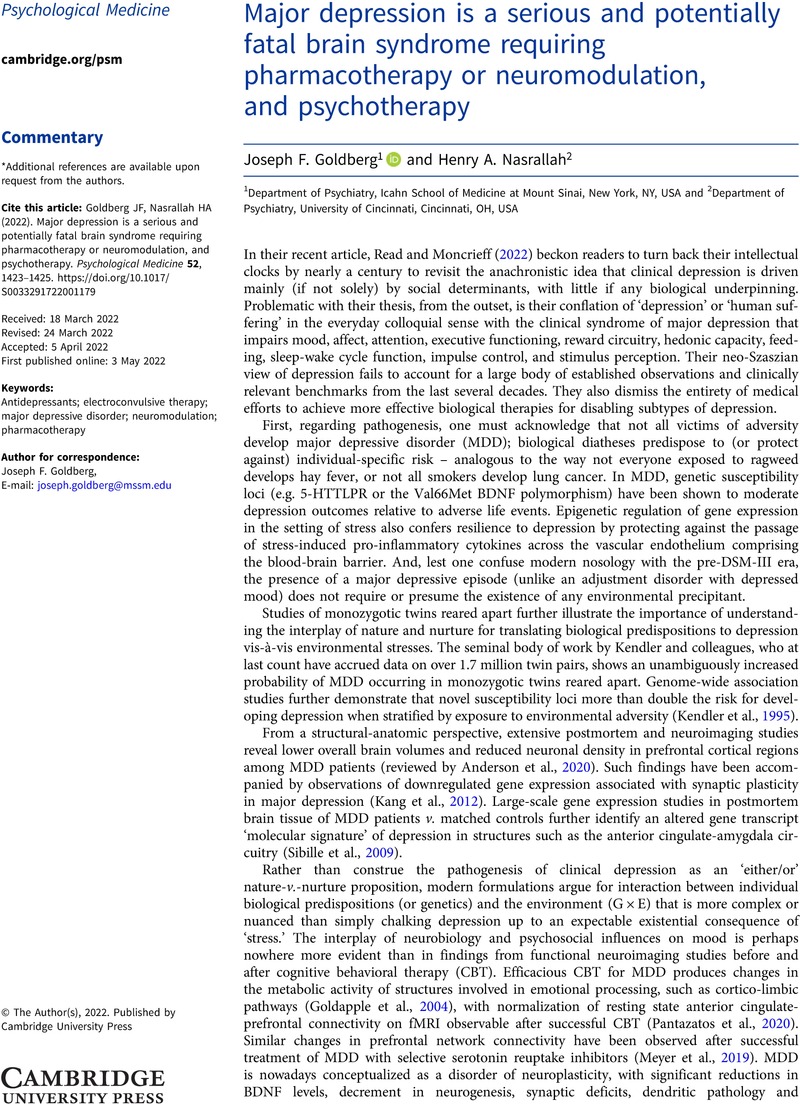Crossref Citations
This article has been cited by the following publications. This list is generated based on data provided by Crossref.
Read, John
Moncrieff, Joanna
and
Horowitz, Mark Abie
2023.
Designing withdrawal support services for antidepressant users: Patients’ views on existing services and what they really need.
Journal of Psychiatric Research,
Vol. 161,
Issue. ,
p.
298.
McIntyre, Roger S.
Alsuwaidan, Mohammad
Baune, Bernhard T.
Berk, Michael
Demyttenaere, Koen
Goldberg, Joseph F.
Gorwood, Philip
Ho, Roger
Kasper, Siegfried
Kennedy, Sidney H.
Ly‐Uson, Josefina
Mansur, Rodrigo B.
McAllister‐Williams, R. Hamish
Murrough, James W.
Nemeroff, Charles B.
Nierenberg, Andrew A.
Rosenblat, Joshua D.
Sanacora, Gerard
Schatzberg, Alan F.
Shelton, Richard
Stahl, Stephen M.
Trivedi, Madhukar H.
Vieta, Eduard
Vinberg, Maj
Williams, Nolan
Young, Allan H.
and
Maj, Mario
2023.
Treatment‐resistant depression: definition, prevalence, detection, management, and investigational interventions.
World Psychiatry,
Vol. 22,
Issue. 3,
p.
394.




